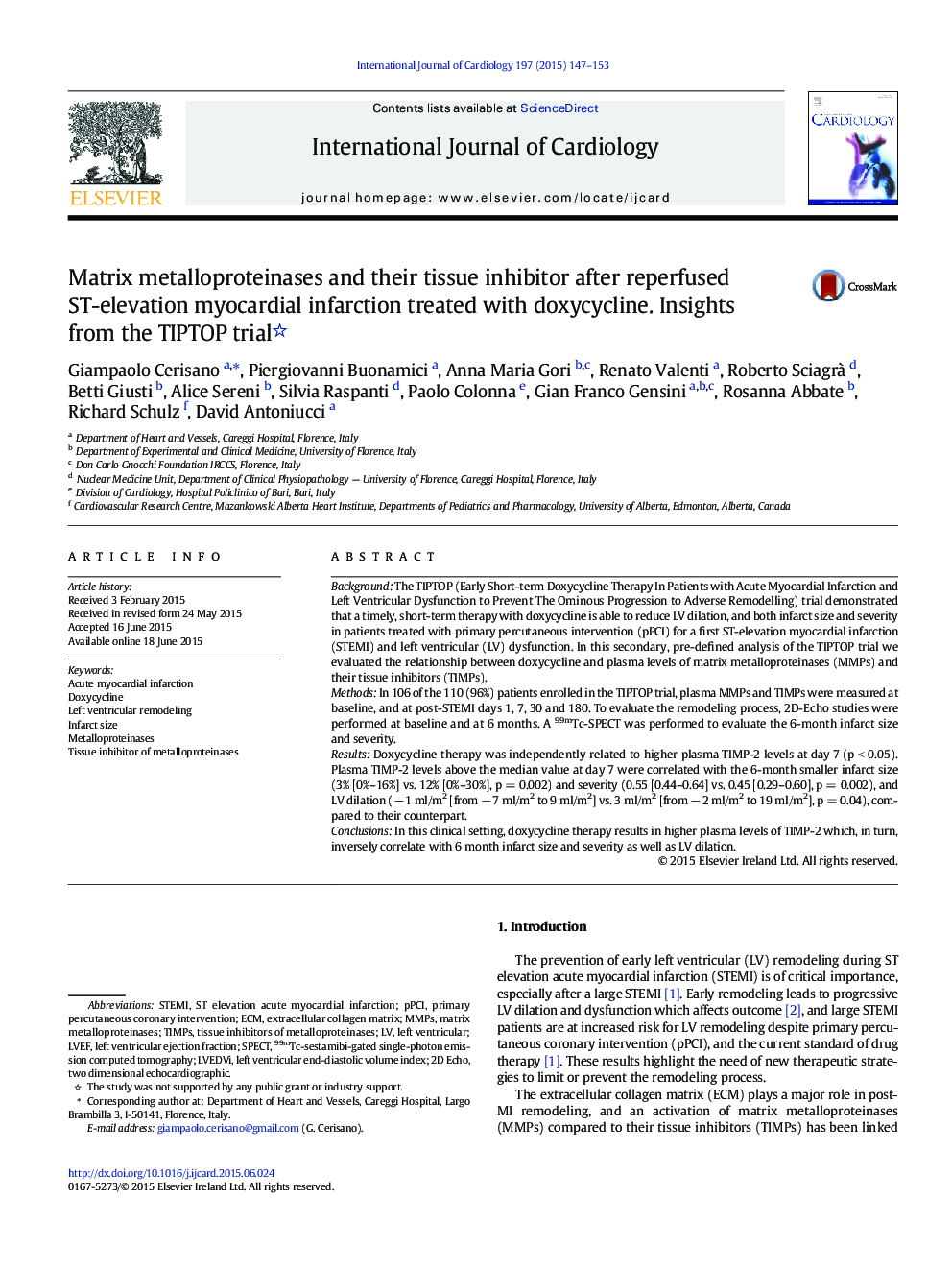| Article ID | Journal | Published Year | Pages | File Type |
|---|---|---|---|---|
| 2928912 | International Journal of Cardiology | 2015 | 7 Pages |
BackgroundThe TIPTOP (Early Short-term Doxycycline Therapy In Patients with Acute Myocardial Infarction and Left Ventricular Dysfunction to Prevent The Ominous Progression to Adverse Remodelling) trial demonstrated that a timely, short-term therapy with doxycycline is able to reduce LV dilation, and both infarct size and severity in patients treated with primary percutaneous intervention (pPCI) for a first ST-elevation myocardial infarction (STEMI) and left ventricular (LV) dysfunction. In this secondary, pre-defined analysis of the TIPTOP trial we evaluated the relationship between doxycycline and plasma levels of matrix metalloproteinases (MMPs) and their tissue inhibitors (TIMPs).MethodsIn 106 of the 110 (96%) patients enrolled in the TIPTOP trial, plasma MMPs and TIMPs were measured at baseline, and at post-STEMI days 1, 7, 30 and 180. To evaluate the remodeling process, 2D-Echo studies were performed at baseline and at 6 months. A 99mTc-SPECT was performed to evaluate the 6-month infarct size and severity.ResultsDoxycycline therapy was independently related to higher plasma TIMP-2 levels at day 7 (p < 0.05). Plasma TIMP-2 levels above the median value at day 7 were correlated with the 6-month smaller infarct size (3% [0%–16%] vs. 12% [0%–30%], p = 0.002) and severity (0.55 [0.44–0.64] vs. 0.45 [0.29–0.60], p = 0.002), and LV dilation (− 1 ml/m2 [from − 7 ml/m2 to 9 ml/m2] vs. 3 ml/m2 [from − 2 ml/m2 to 19 ml/m2], p = 0.04), compared to their counterpart.ConclusionsIn this clinical setting, doxycycline therapy results in higher plasma levels of TIMP-2 which, in turn, inversely correlate with 6 month infarct size and severity as well as LV dilation.
